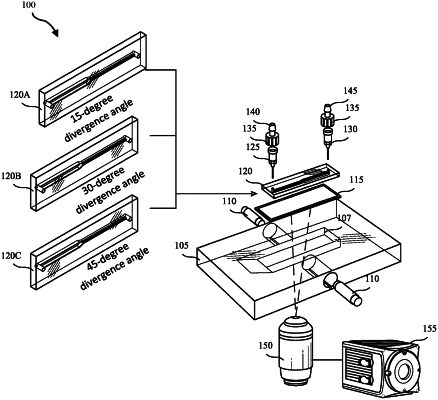| CPC G06T 7/20 (2013.01) [B33Y 99/00 (2014.12); G01N 15/1404 (2013.01); G01N 15/1459 (2013.01); G01N 21/85 (2013.01); G06T 7/0004 (2013.01); G06T 7/70 (2017.01); B33Y 30/00 (2014.12); G06T 2207/20056 (2013.01)] | 19 Claims |

|
1. A testbed platform for characterizing materials and inks utilized in additive manufacturing of nanocomposites comprising:
a base comprising a top surface, a bottom surface, and a pair of opposing sidewalls, at least a portion of the top surface and the bottom surface forming an aperture that receives light rays;
a plurality of electromagnets coupled to the opposing sidewalls of the base;
a microscope slide seated in the aperture formed by the top surface and the bottom surface of the base;
an interchangeable channel comprising a microfluidic flow cell coupled to the microscope slide;
a plurality of needle tips in fluidic communication with the microfluidic flow cell, wherein a first needle tip in the plurality of needle tips is coupled to a syringe inlet via a lock connector and is configured to receive magnetic inks utilized in additive manufacturing from a syringe for dispensing into the microfluidic flow cell and wherein a second needle tip in the plurality of needle tips is coupled to a syringe outlet via another lock connector and is configured to pull the magnetic inks from the microfluidic flow cell into a reservoir;
an inverted microscope lens in optical communication with the base, the microscope slide, and the microfluidic flow cell; and
a high-speed camera coupled to the inverted microscope lens, wherein the high-speed camera is utilized to capture one or more images of a flow behavior of the magnetic inks dispensed into the microfluidic flow cell for performing an analysis that determines an optimal nozzle design for microdispensing the magnetic inks during an additive manufacturing process.
|